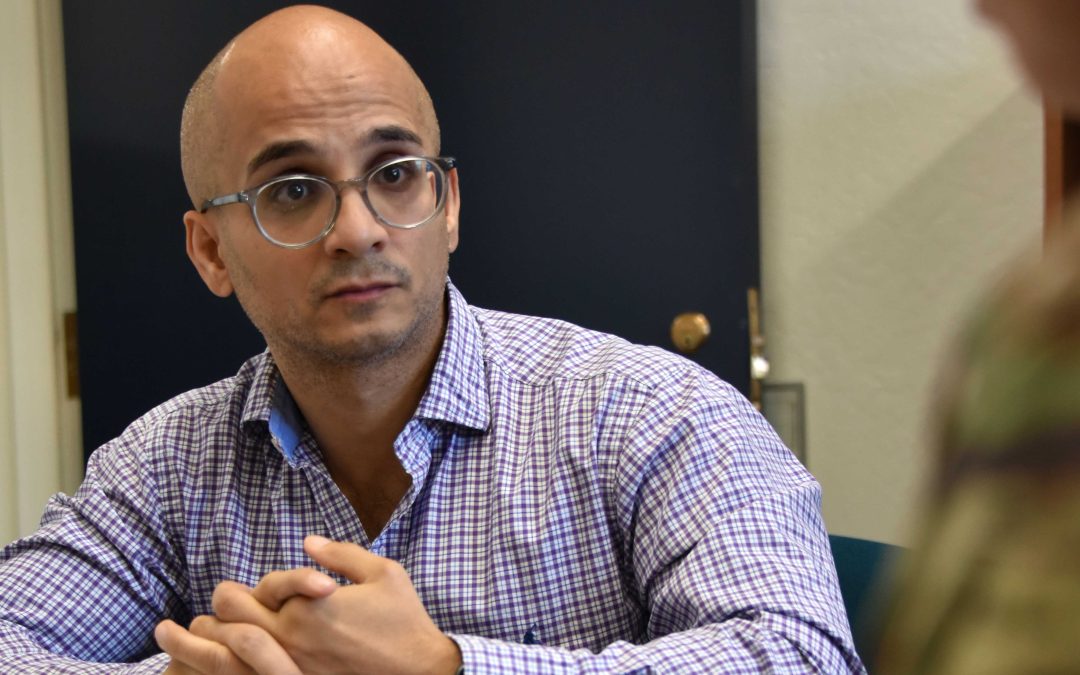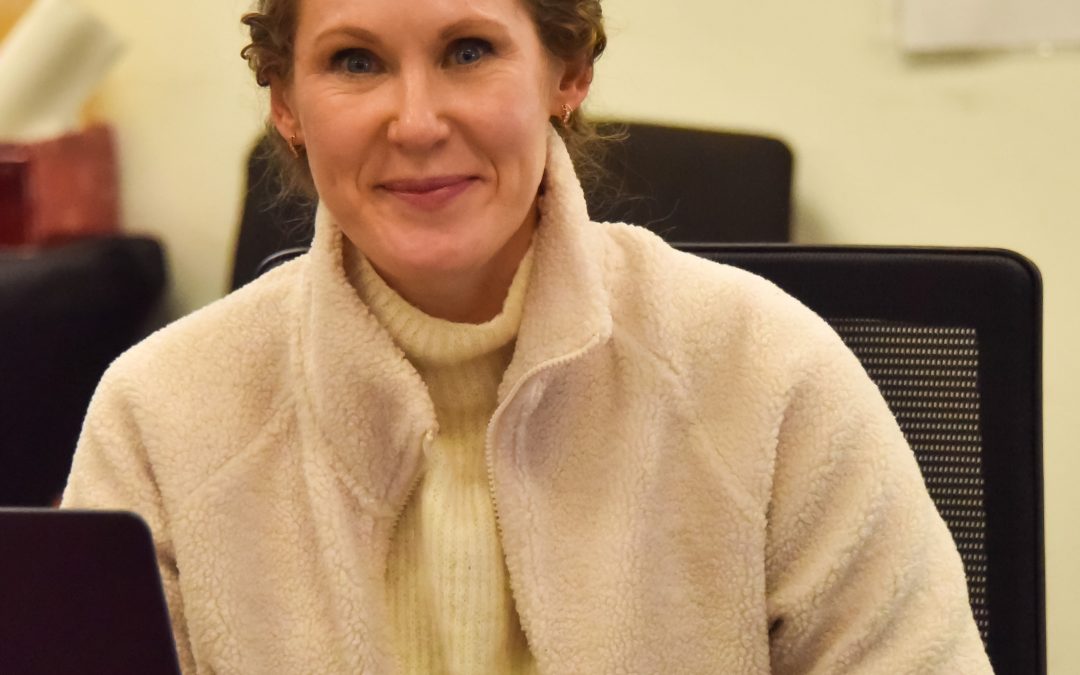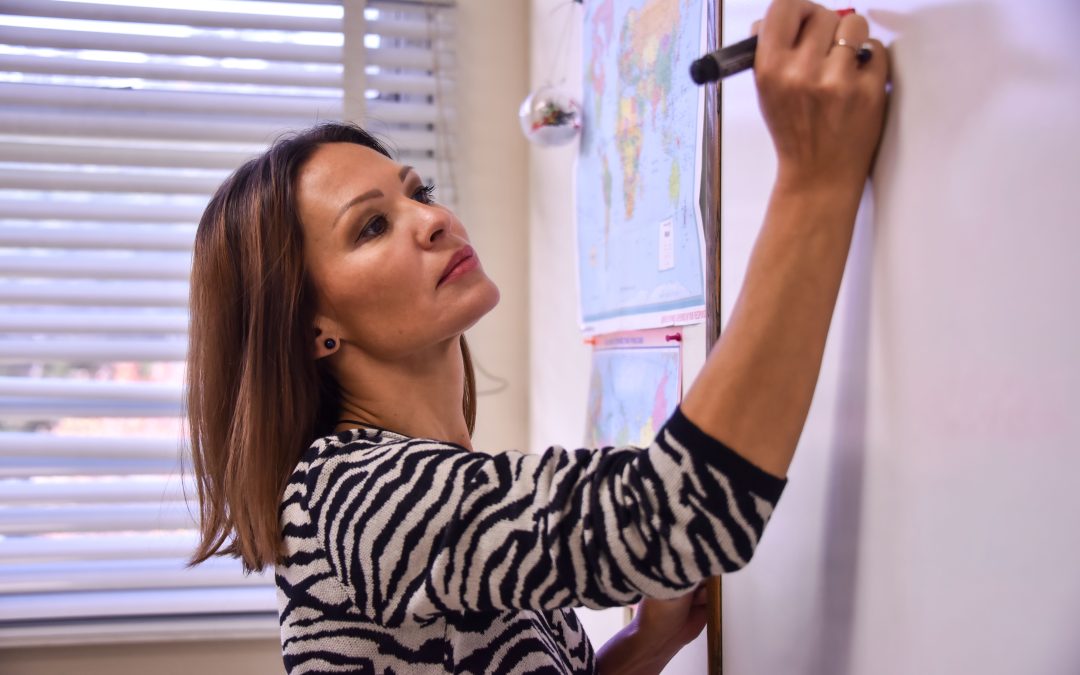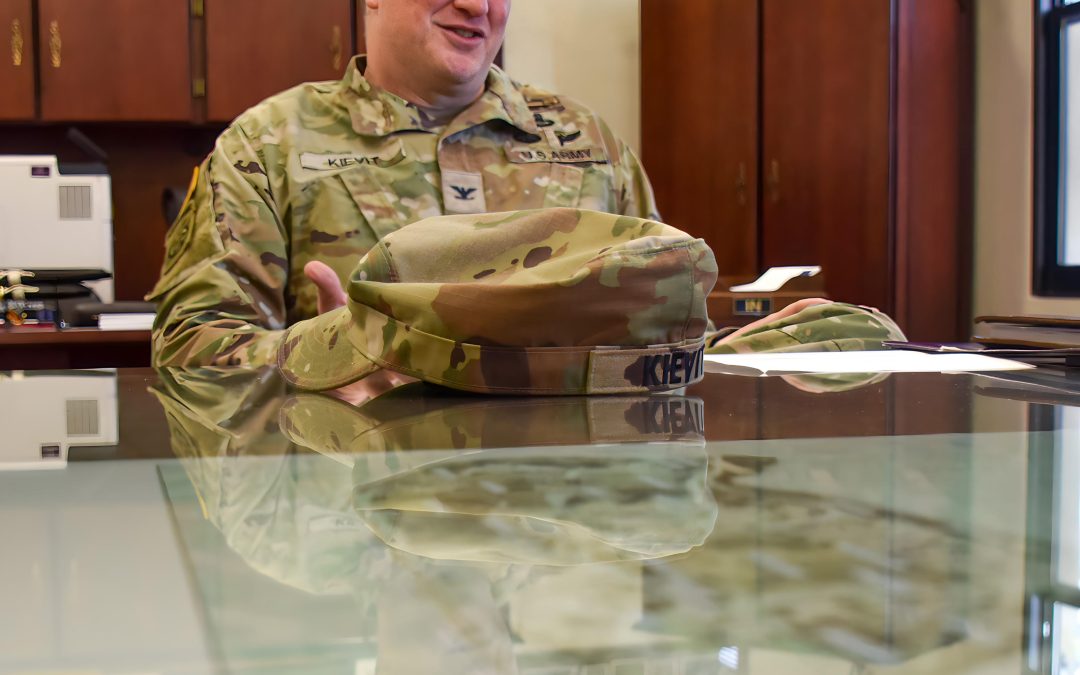Courtesy Story
Center for Information Warfare Training
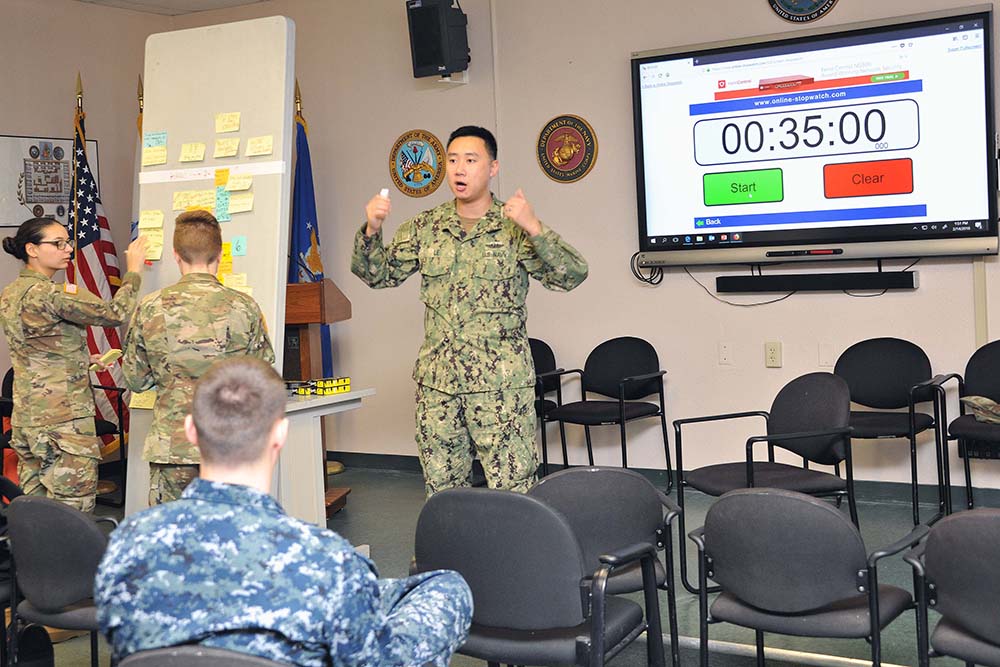
Lt. Tony Le, an Information Warfare Training Command Monterey student studying Arabic at the Defense Language Institute Foreign Language Center, leads a timed group brainstorming session with other DLIFLC students as they focus on solution-based ideas. (U.S. Army photo by Natela Cutter/Released)
MONTEREY, Calif. – Students at the Defense Language Institute Foreign Language Center are taking charge of their foreign language education under the guidance of a former subsurface engineering officer assigned to Information Warfare Training Command Monterey.
Lt. Tony Le redesignated to the Navy’s Foreign Area Officer career field and is now studying Arabic at the DLIFLC alongside new enlisted recruits from all military branches. Despite the differences between the fields, Le has managed to take process improvement skills from the submarine world and apply them to the foreign language classroom.
“When I was an engineer, I worked in a unit that was charged with figuring out how to make items user friendly and more intuitive,” said Le. “One time we actually took the cumbersome design of an old-school periscope and replaced it with an off-the-shelf Xbox controller. This planning concept is no different.”
The process, called “design thinking,” is a phased approach. Participants begin by identifying elements of the current situation that can be improved. They then break out into timed brainstorming sessions where they focus on solution-based ideas. Ideas are then built up, iterated on, or discarded in subsequent phases.
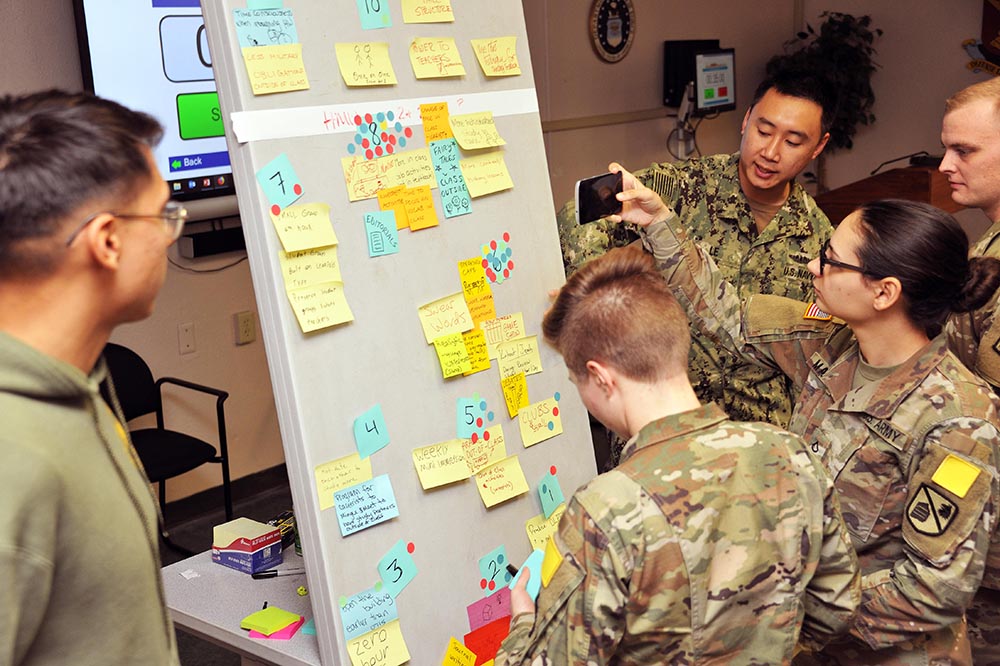
Lt. Tony Le, an Information Warfare Training Command Monterey student studying Arabic at the Defense Language Institute Foreign Language Center, leads a timed group brainstorming session with other DLIFLC students as they focus on solution-based ideas. (U.S. Army photo by Natela Cutter/Released)
By the end of the session, Le’s group had several ideas for innovation in the classroom ranging from increased use of media to three-way translation. These will be implemented on a small scale to see how they work, and if successful, may be considered for wider adoption.
“These young Soldiers, Sailors, Airmen, and Marines have some really great ideas. Most of them are brand new to the military so they aren’t thinking about limitations or boundaries,” said Chief Cryptologic Technician (Interpretive) Ian Wyatt, assistant chief military language instructor for the Middle East III School. “They’re focused on possibilities, and one idea that I’m looking forward to seeing in action is formal debate in the foreign language.”
In response to operational needs, DLIFLC is working toward a higher graduation standard by 2022. Students are currently required to achieve a limited working proficiency, denoted by a score of 2 on the Defense Language Proficiency Test. The increased standard would require a half-step increase to 2+, which is closer to a professional level of proficiency. The challenge, one of many, is how to train students to meet the higher standard without increasing the duration of the school which, for the most challenging languages, is already 64 weeks.
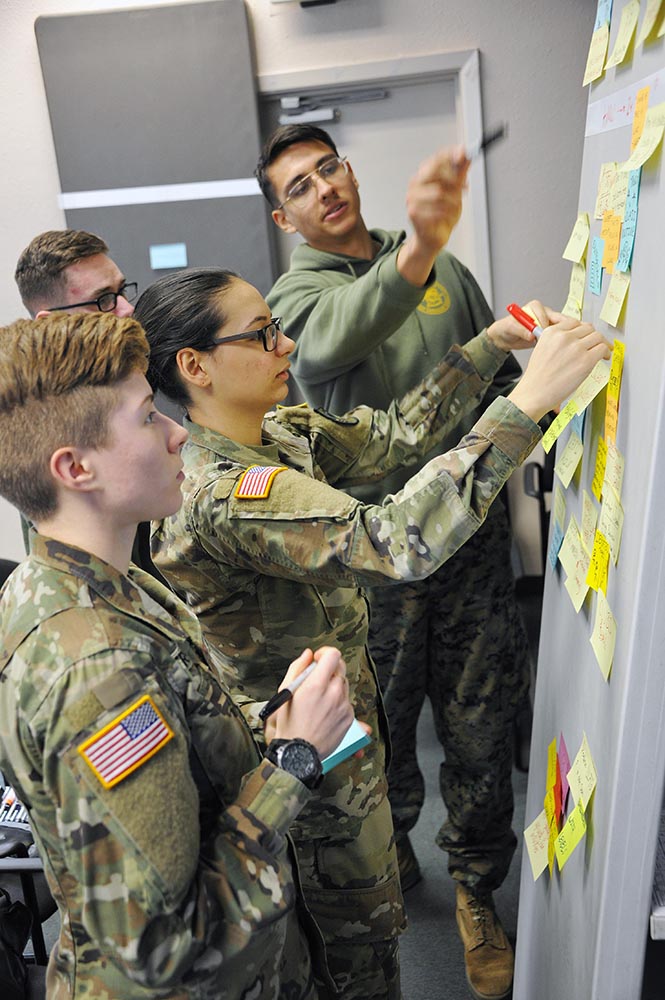
Lt. Tony Le, an Information Warfare Training Command Monterey student studying Arabic at the Defense Language Institute Foreign Language Center, leads a timed group brainstorming session with other DLIFLC students as they focus on solution-based ideas. (U.S. Army photo by Natela Cutter/Released)
While these challenges are being wrestled at the highest levels, Le is fostering a ground-up approach by pulling fresh ideas from some of our military’s newest and brightest recruits.
IWTC Monterey, as part of the Center for Information Warfare Training, provides a continuum of foreign language training to Navy personnel, which prepares them to conduct information warfare across the full spectrum of military operations.
For more news from Center for Information Warfare Training, visit www.navy.mil/local/cid/, www.netc.navy.mil/centers/ciwt/, www.facebook.com/NavyCIWT, or www.twitter.com/NavyCIWT.
DLIFLC provides resident instruction in 17 languages at the Presidio of Monterey, California, with the capacity to instruct another 65 languages in Washington, D.C. The Institute has graduated more than 220,000 linguists since 1941.
In addition, multiple language training detachments exists at sites in the U.S., Europe, Hawaii and Korea, spanning all the U.S. geographic combatant commands in support of the total force.

